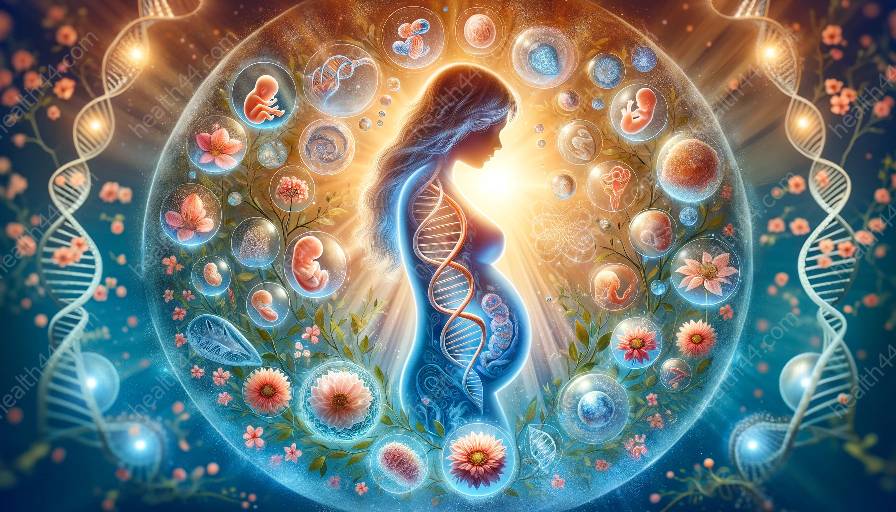Fetal circulation involves the unique system through which oxygen and nutrients are delivered to the developing fetus while in the womb. This system is characterized by several key adaptations that ensure the fetus receives the necessary oxygen and nutrients for proper growth and development.
Fetal Circulation Overview
At the heart of fetal circulation is the need to channel oxygenated blood and nutrients to the developing fetus, while filtering out waste products and carbon dioxide. The adaptation of the fetal circulation system is essential for supporting fetal development and ensuring the proper growth of vital organs such as the heart and lungs.
Placental Circulation
The placenta plays a central role in fetal circulation, serving as the interface between the mother's circulation and the fetal circulation. Through the placenta, the fetus receives oxygen and nutrients from the mother's blood, while also eliminating waste products and carbon dioxide into the maternal blood. This exchange is facilitated by the unique structure of the placental villi and the intricate network of blood vessels within the placenta.
Fetal Heart Adaptations
The fetal heart undergoes adaptations to accommodate the circulation needs of the developing fetus. The fetal heart has special features such as the foramen ovale and ductus arteriosus, which allow for the shunting of blood between the right and left sides of the heart, bypassing the pulmonary circulation. These adaptations help maximize the amount of oxygenated blood that reaches the fetal brain and vital organs, supporting proper growth and development.
Umbilical Circulation
The umbilical cord is responsible for transporting blood between the fetus and the placenta. It contains two arteries and one vein, which carry deoxygenated blood and waste products from the fetus to the placenta, and return oxygenated blood and nutrients from the placenta to the fetus. The umbilical circulation is a critical component of fetal development, ensuring the continuous exchange of oxygen and nutrients necessary for the growing fetus.
Adaptations to Support Fetal Development
The key adaptations in fetal circulation work synergistically to ensure that the developing fetus receives the necessary oxygen and nutrients for optimal growth and development. These adaptations are essential for supporting the growth of vital organs, such as the brain, heart, and lungs, and for promoting overall fetal well-being.
Oxygen Transport
In the fetal circulation, the adaptations in the placental and umbilical circulation systems are specifically designed to facilitate the transfer of oxygen from the mother's blood to the fetal blood. This ensures that the fetus receives an adequate oxygen supply to support the development of its organs and tissues.
Nutrient Delivery
In addition to oxygen, the fetal circulation system is optimized for the transport of essential nutrients from the mother's blood to the fetus. These nutrients include glucose, amino acids, lipids, vitamins, and minerals, all of which are crucial for the fetus's growth and development. The adaptations in the placental circulation system enable the efficient transfer of these nutrients to the developing fetus.
Waste Removal
Another key adaptation in fetal circulation is the removal of waste products, such as carbon dioxide and metabolic waste, from the fetal blood. The placental circulation system acts as a filtration system, allowing for the efficient removal of waste products from the fetal bloodstream and their transfer to the maternal circulation for elimination. This process is essential for maintaining the fetal internal environment and supporting proper development.
Temperature Regulation
The adaptations in fetal circulation also play a role in regulating the fetal body temperature. The continuous exchange of blood between the fetus and the placenta helps maintain a stable intrauterine environment, ensuring that the fetus's temperature remains within optimal ranges for growth and development.
Conclusion
The key adaptations in fetal circulation are crucial for supporting the needs of the developing fetus. These adaptations enable the efficient exchange of oxygen, nutrients, and waste products, while also contributing to the regulation of fetal body temperature. Understanding the unique features of fetal circulation and its role in supporting fetal development is essential for promoting healthy prenatal growth and well-being.


